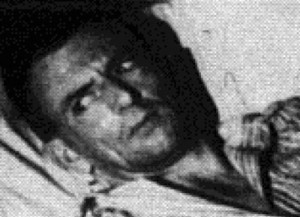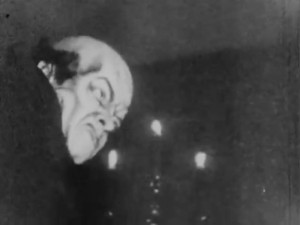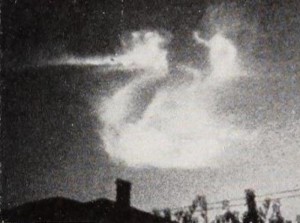"Film contains Sid and Charlotte's heads floating on a black background. They talk about the kinds of T.V. shows they like and it ends with Sid saying the punch line 'I can't stand a show that is all talking heads'." UCLA Film & Television Archive.
This film was produced at some time in the 1950s.
"A scientific expedition to Mexico for a study of the animals, reptiles and birds. Our visit for the most part is in the rural or wilderness areas but we do get into the market place and we see some of the ancient ruins. A pictorial review of a great many of species of wild life which we rarely see as many of us are afraid to visit the habitat of those creatures. The close-up photography puts the small creatures almost on our noses" PSA Journal, Nov. 1959, 48.

"Something has induced the man in the film into a nightmare accompanied by wind-blown Venetian slats, moving windows, turning door knobs, footsteps, and music to stir the emotions - all to the punishment of the victim and the excitement of the viewing audience" PSA Journal, Oct. 1962, 35

"A colonial scene in the U.S. An old lady sits astride a bell while a man in blackface, wig, and livery pulls the bell rope. From an upper door emerges an old man, dressed as a dandy, who tips his hat to the woman as he walks down stairs grinning. Others leave the same door and walk down the same stairs: a shabby man, a cop, and, several times, the same dandy. The man in blackface hangs himself; the dandy continues to smile. A bell tolls, a grave beckons. In the dark, the dandy plays the piano. Is he Death?" IMDb.
Orson Welles' filmmaking debut, which was co-directed by William Vance. An amateur production, Welles later described the film as a parody of surrealist cinema and the films of Jean Cocteau and Luis Buñuel.
"Hearts Of The Golden West, 1200 ft., 16mm., filmed and directed by Theodore Huff and enacted entirely by youngsters under thirteen, is a delightful and whimsical burlesque of the Griffith melodrama of the days when titles were long and plots of villainy and intrigue laid in the great open places swept grandly to a moral conclusion in which "true hearts were united." In those days, producers did not hesitate to use a cyclorama or to place painted canvas scenery on an outdoor location. Mr. Huff revives all of the old technique, even to the dance hall set, with its inevitable balcony, and the fight to the finish at the edge of the cliff. Under his direction, the children act their parts with complete seriousness and, in some cases, with mimetic ability that would have given their prototypes pause." Movie Makers, Dec. 1931, 658.

"With the use of a time lapse device, S. G. Lutz has made, in The Heavens Declare the Glory of God, a highly competent record of clouds in motion. Although the subject, treated in a different manner, might easily become too static actually to constitute a true movie. Mr. Lutz has achieved a sure continuity and a sense of artistry that is unusual. In many instances, the film presents sequences of such an unusual kind as to be highly exciting and almost awe inspiring. Speeding the motion of the clouds creates, from the commonplace, a sense of eeriness and weird beauty. In many of the storm sequences, the motion is so greatly dramatized as to impart a nearly terrifying sense of impending disaster." Movie Makers, Dec. 1944, 496.
"A dog tells her story, and sings for you." UCLA Film & Television Archive.
Total Pages: 299